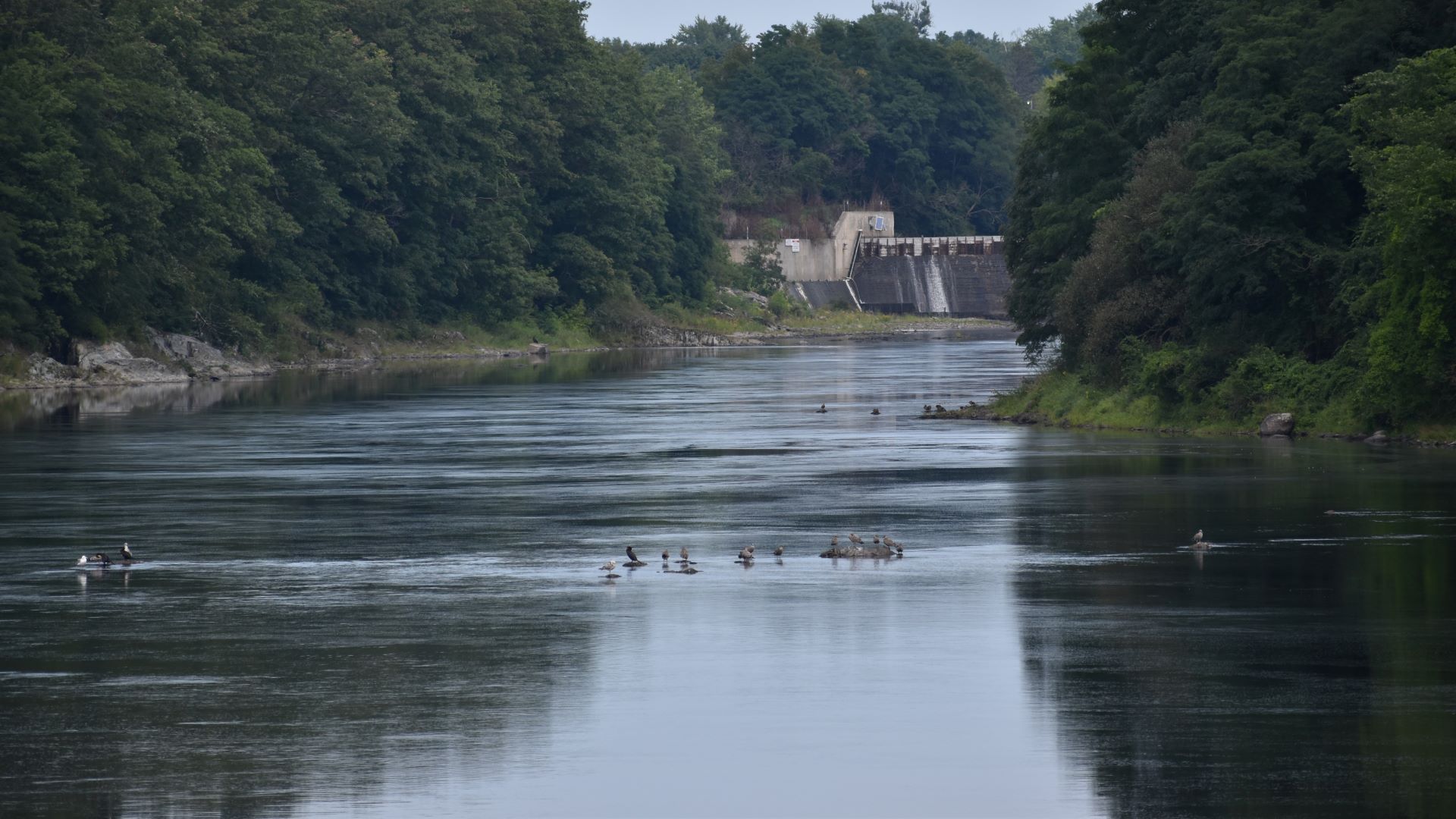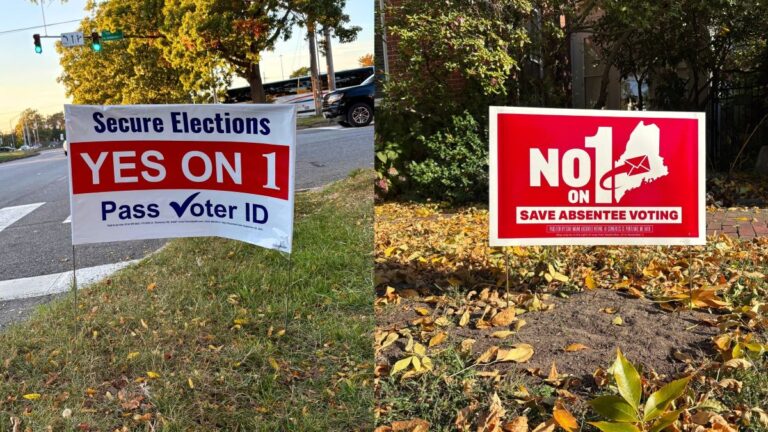For more than a century, locomotives have been brought to a rail yard in Waterville on the banks of the Kennebec River, where they can be stripped, repaired and sometimes rebuilt entirely. Once a hub for the Maine Central Railroad, the yard was acquired in 1983 by Pan Am Railways, which continued to operate it as a major servicing hub for passenger and freight cars.
But along with an old yard and heavy industry came environmental hazards, and the site has been plagued by problems over the years.
State records show oil discharge violations and penalties at the yard going back to 1986, when staff failed to properly clean up oily waste from the removal of an underground storage tank.
As recently as February, the company was fined $310,225 for failing to pay licensing fees, and violating Maine’s oil discharge prevention pollution and control laws. This came after the Maine Department of Environmental Protection (DEP) documented 45 occasions between 2015 and 2018 that oil was released into the Kennebec River.

The company sent a check to the DEP for $205,901 in February to settle that fine; the agency agreed to waive the rest as long as the company took “corrective actions” laid out by DEP staff. The Maine Monitor was unable to reach DEP representatives for comment.
Pan Am faced similar issues in 2010 and 1990, when it was penalized for multiple oil discharges to the Kennebec River and failing to promptly report spills or clean them to the DEP’s satisfaction. In 2015, the company agreed to pay $152,000 in fines and complete an environmental culture assessment to settle allegations by the U.S. Environmental Protection Agency that it violated the federal Clean Water Act at rail yards in Maine and Massachusetts.
Cyndi Scarano, Pan Am’s executive vice president, said she is confident the problems at the Waterville yard, some caused by aging infrastructure, have been addressed. The company spent more than $700,000 on improvements in recent years to resolve the issues, including replacing pipes, and updating drainage and wastewater treatment systems.
“We did a lot of work on the oil water separator. We did a lot of work on the roofs and the drainage,” said Scarano. “There were a lot of improvements we did that were beneficial.”
Many recent spills in Waterville came after heavy rains caused overflow from treatment systems, as well as from problems with a submerged pipe that discharged oil directly to the river.
In the case of the submerged pipe, it took time for the company to find the source of the contamination, said Scarano, in part because the yard is a historic place where much of the infrastructure is old and not well-mapped.
‘As frustrated as DEP staff’
“I feel like we have a much better knowledge of what is there historically, so that we have proper containment for the catch basins, et cetera, because we know where everything is,” said Scarano.
“We were as frustrated as (DEP staff),” she added, “because we were investing in a lot of infrastructure, and a lot of testing and a lot of cleaning, and we still didn’t seem to be able to solve it.”
Pan Am staff eventually located a pipe 14 feet below ground that appeared to be the source of some spills. Removing it “seems to have resolved the issue,” said Scarano. “Since that time neither ourselves nor the agency has found any more sheens. So we feel very confident that we have solved the problem.”
Not every issue was related to the pipe, however.
In the largest documented spill, Pan Am reported that 200 gallons of oil flowed to the ground after heavy rains caused an underground sump pump that was clogged with “trash and debris and oil” to overflow. DEP staff who visited the site noted there was “extensive oil staining on the ground” and “the discharge appeared to Department staff to be greater than originally reported.” Most of the reported spills were between one-half and five gallons.
In a document laying out the violations, DEP staff also noted several cases in which spills were not reported within a required time frame and were not cleaned up to the satisfaction of the department’s commissioner. One was reported by a kayaker who saw an oil sheen on the river near the yard.
Scarano said protocols have been updated and facilities are inspected weekly or on a more frequent basis, depending on the weather. “We’re constantly monitoring it. They check those outfalls all the time, they’re marking them down. I think it’s sufficient for what’s done in that yard.”
The DEP also charged that Pan Am failed to record where major spills or leaks occurred in the past three years, and was unable to produce evidence it complied with inspection requirements and employee training requirements.
As part of the 2021 agreement, Pan Am, which is based in Delaware and headquartered in Massachusetts, must take samples monthly for a year and report them to the DEP. The company is subject to fines of $500 per day for violations.
Pan Am is in the midst of a merger with CSX Transportation, which operates a 21,000-mile rail network across 23 states and Canada.
According to the Corporate Research Project, a nonprofit that tracks corporate violations, Pan Am Railways, Inc., has been fined a number of times over decades for workplace and environmental violations. Since 2000, it has been ordered to pay more than $1.6 million in penalties and compliance action costs at its yards in Maine and Massachusetts.
The company also has run afoul of federal whistleblower laws. It was ordered by a federal appeals court in 2017 to pay $260,000 in punitive and compensatory damages to an employee at the Waterville yard who was disciplined and accused of lying after reporting an injury and unsafe working conditions in 2011.
Pan Am employs more than 200 workers in Maine, said Scarano, many at the Waterville facility.
“They’re very informed … They are well-trained, they’re very hard working,” she said. “It’s a good group of individuals up there that are concerned. They’re concerned with the environment just as much as we are.”







